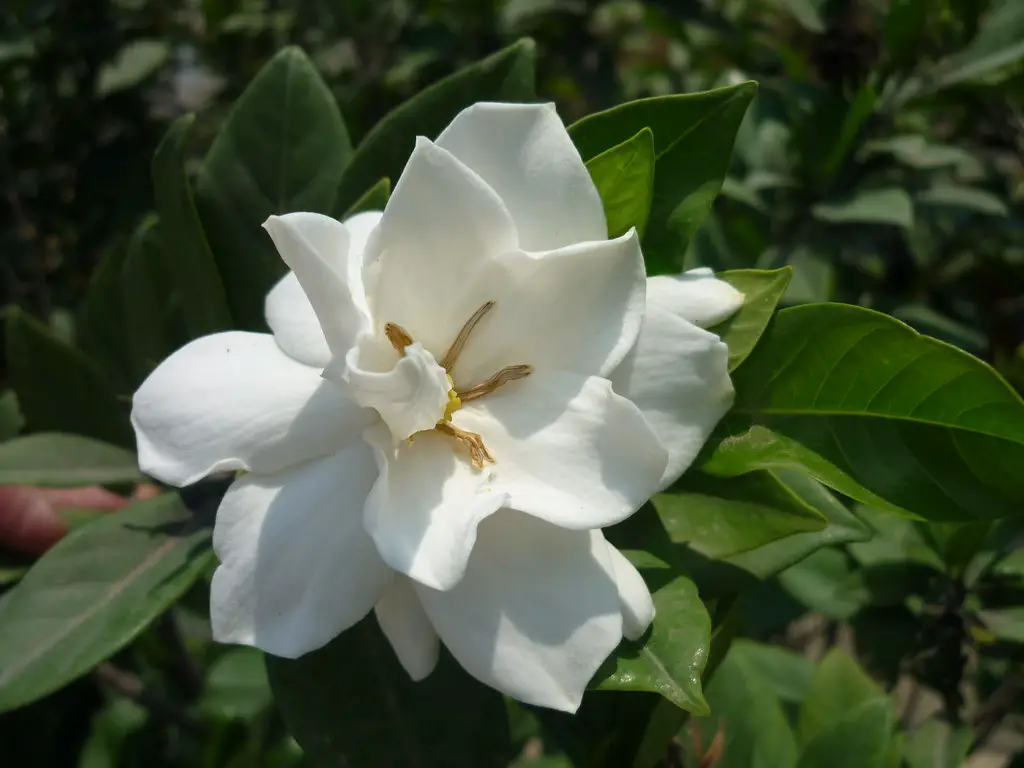Gardenias, often referred to as “Cape Jasmine,” are renowned for their beautiful, creamy white flowers and intoxicating, sweet fragrance. The distinct scent of Gardenia blooms has captivated gardeners and perfume makers alike, inspiring numerous cultural and artistic expressions throughout history.
Native to tropical and subtropical regions of Asia, Africa, Madagascar, and the Pacific Islands, Gardenias belong to the coffee family, Rubiaceae. Comprising over 140 species, these evergreen shrubs and small trees have become a garden staple in many parts of the world, symbolizing purity, love, and refinement.
However, despite their mesmerizing beauty, Gardenias are considered to be somewhat finicky plants that demand specific care and attention. They require precise conditions concerning light, water, temperature, and soil to bloom profusely. Whether grown indoors or outside, Gardenias offer a rewarding challenge for the dedicated gardener, bringing both aesthetic appeal and a unique olfactory experience.
| Attribute | Details |
|---|---|
| Common Names | Gardenia, Cape Jasmine |
| Botanical Name | Gardenia jasminoides |
| Family | Rubiaceae |
| Plant Type | Evergreen shrub |
| Mature Size | 2 to 8 feet |
| Sun Exposure | Full sun to partial shade |
| Soil Type | Acidic, well-drained soil |
| Hardiness Zones | 8-11 |
| Native Area | Asia, Africa, Madagascar, Pacific Islands |
Gardenia Care
Gardenia care involves a balanced combination of sunlight, moisture, and nutrient-rich soil. These plants are known to be somewhat temperamental, and they require constant vigilance to keep them healthy and blooming.
One of the biggest challenges with Gardenias is maintaining the soil’s acidity and ensuring that it is well-drained. Regular feeding with an acidic fertilizer, consistent watering, and providing optimal light will help Gardenias thrive. Monitoring for pests and diseases is also vital for these delicate beauties.
Light Requirement for Gardenia
Gardenias flourish in bright, indirect sunlight. They prefer a location with morning sun and afternoon shade. Too much direct sunlight can lead to leaf scorching, while too little may cause bud drop.
Soil Requirements for Gardenia
Acidic soil with a pH of 5.0 to 6.0 is ideal for Gardenias. The soil should also be well-drained and rich in organic matter. Amending with peat moss or sulfur can help achieve the desired acidity.
Water Requirements for Gardenia
Gardenias need consistent moisture without becoming waterlogged. The soil should be kept evenly moist but never soggy. A layer of mulch can help retain moisture, and watering with soft, filtered water can prevent mineral buildup.
Temperature and Humidity
Gardenias thrive in temperatures ranging from 65-75°F during the day and slightly cooler at night. They appreciate high humidity and may benefit from regular misting, especially when grown indoors.
Fertilizer
An acidic fertilizer specifically formulated for azaleas, rhododendrons, or Gardenias is ideal. Apply according to the manufacturer’s instructions during the growing season, usually every 2-4 weeks.
Pruning Gardenia
Pruning is essential for maintaining the shape and encouraging fuller growth in Gardenias. Prune just after flowering to remove spent blooms and any weak or dead branches.
Propagating Gardenia
Propagating Gardenias can be done through stem cuttings. Take cuttings from new growth in spring or early summer, dip in rooting hormone, and place in a moist growing medium.
How To Grow Gardenia From Seed
Growing Gardenia from seed is a slow and challenging process. The seeds need to be fresh and should be planted in a light, well-draining mix. Maintain high humidity and patience as germination can be erratic.
Common Pests & Plant Diseases
Aphids
Control aphids with insecticidal soap or neem oil.
Whiteflies
Whiteflies can be managed using sticky traps and insecticides.
Sooty Mold
Often linked to aphid infestations, sooty mold can be washed off with soapy water.
Common Problems With Gardenia
Yellowing Leaves
Yellowing leaves may indicate a lack of iron, often due to high pH. Correct the soil acidity as needed.
Bud Drop
Bud drop can occur due to inconsistent watering, temperature fluctuations, or inadequate light. Monitor and adjust care accordingly.
Pro Tips
- Test soil regularly to maintain the correct pH and amend as necessary.
- Avoid water on the leaves, as it can lead to fungal diseases.
- Monitor regularly for pests, as Gardenias can be susceptible.
- Provide good air circulation to prevent diseases.
- Prune lightly and only as needed to maintain shape and vigor.




